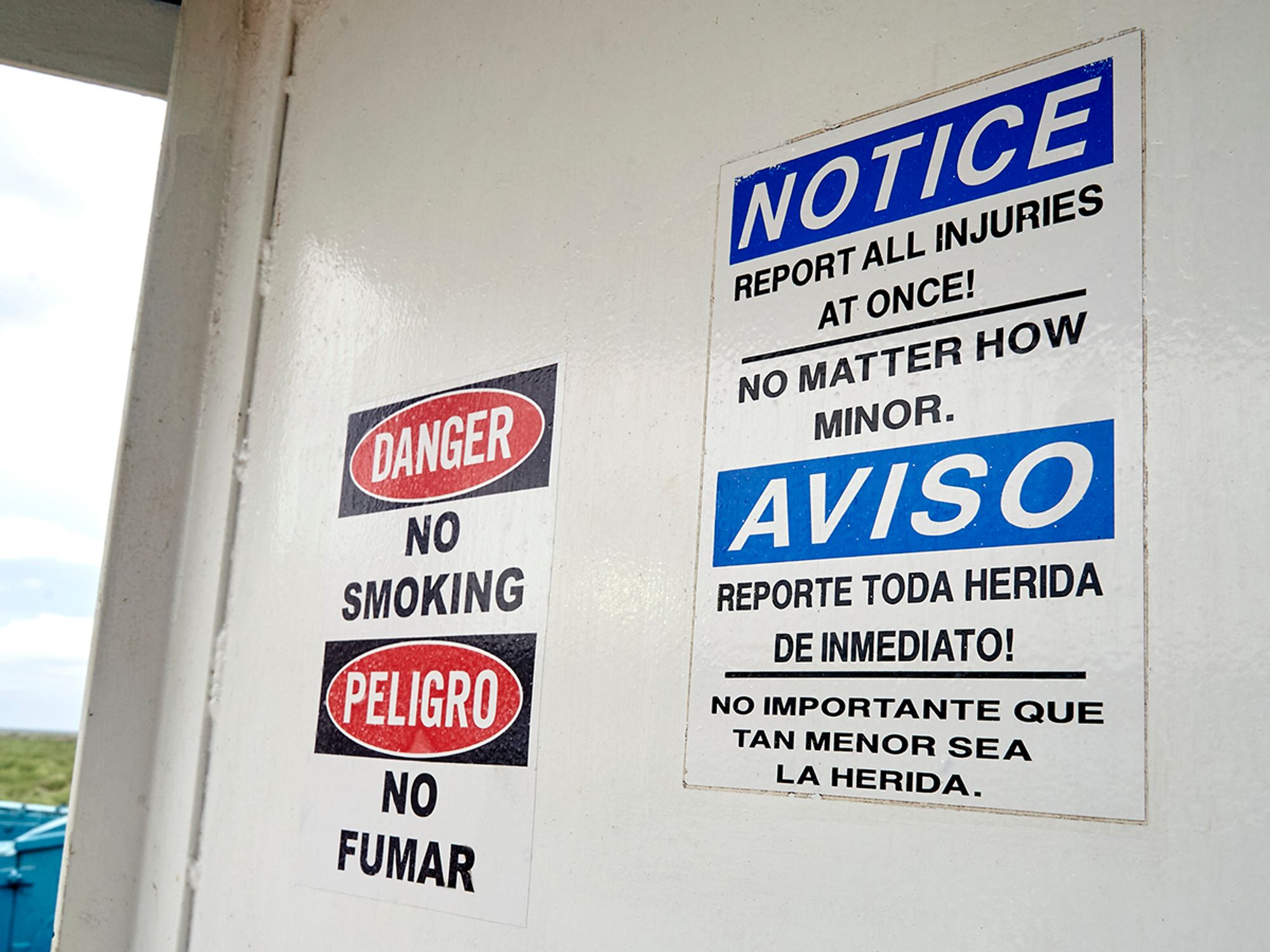Signs and markings

OSHA’s 1910.144-.45 regulations provide specifications for signs and tags and are intended to cover all safety signs except those designed for streets, highways, railroads, and marine regulations. These specifications do not apply to plant bulletin boards or to safety posters.
Action steps
- Use appropriate colors for identification of equipment and hazards per OSHA regulations.
- Ensure emergency stop bars and buttons on hazardous machines are red.
- Ensure yellow is used for designating caution and for marking physical hazards such as: Striking against, stumbling, falling, tripping, and “caught in between.”
- Follow OSHA specifications for accident prevention signs and tags.
- Instruct employees in recognizing accident prevention signs and tags and the appropriate action to take regarding those markings.
- Ensure messages on signs and tags are clear and to the point.
Training action plan
Training on accident prevention signs and tags is required prior to or at the time of initial assignment to areas where accident prevention signs and tags are used. Training content should generally include:
- Sign color,
- Symbols,
- Labeling, and
- Company-specific marking systems.
Consider other safety training issues relative to safety signs such as hazard communication and the specific posting requirements of the chemical-specific standards found in Subpart Z of the 1910 regulations. Training might also cover the information found in the poster describing employee rights under OSHA (poster 2203) which must be displayed somewhere where workers will see it.
OSHA does not require training documentation for Specifications for Accident Prevention Signs and Tags, but it is always prudent to keep records anyway. Training records can tell you who was trained on what, when, and what was covered.
Tips
- The lines used to delineate the aisles may be any color so long as they clearly define the area considered as aisle space. The lines may be composed of dots, square, strip or continuous, but they too must define the aisle area.
- The recommended width of aisle markings varies from two inches to six inches; therefore, any width two inches or more is considered acceptable.
- Danger sign — The colors red, black, and white must be those of opaque glossy samples as specified in Table 1 of Fundamental Specification of Safety Colors for CIE Standard Source “C”, American National Standard Z53.1-1967.
- Caution sign — Standard color of the background must be yellow; and the panel, black with yellow letters. Any letters used against the yellow background must be black. The colors must be those of opaque glossy samples as specified in Table 1 of American National Standard Z53.1-1967.
- Safety instruction signs — Standard color of the background must be white; and the panel, green with white letters. Any letters used against the white background must be black. The colors must be those of opaque glossy samples as specified in Table 1 of American National Standard, Z53.1-1967.
Checklist
Review these checklists for signs and markings at your facility.
Hazardous substances
- Is every hazardous chemical in the workplace labeled with identification and hazard warnings?
- Are safety and other containers painted appropriately?
- Are equipment, containers, materials, or areas where biohazards are or could be present labeled with the biological hazard warning?
- Are any entrances to regulated areas where the 13 carcinogens listed at 1910.1003 are present marked with appropriate signage warning of the danger?
- Are signs posted warning of presence and hazards of asbestos where required?
Aisles
- Are permanent aisles and passageways appropriately marked?
Materials handling
- Are clearance signs warning of clearance limits provided?
- Are powered industrial trucks appropriately marked?
- Are cranes marked with the load rating on each side?
- Are crane pendant control boxes clearly marked for identification of functions?
Emergency
- Are exits marked by a readily visible sign?
- Are areas that could be mistaken for an exit identified by a sign reading “Not an Exit” or something similar?
- Are portable fire extinguishers mounted, located, and identified so they are readily accessible?
Ladders
- Are defective ladders withdrawn from service and tagged or marked as “Dangerous, Do Not Use”?
Lockout/tagout
- Do tagout devices warn against hazardous conditions if the machine or equipment is energized?
Confined spaces
- Are completed confined space permits posted at an appropriate location?
- Are signs posted at permit-required confined spaces describing the dangers present?
OSHA posters
- Is OSHA’s Form 2203 (or 3165) describing the OSH Act posted appropriately?
- Is the annual summary of OSHA No. 300 Form posted appropriately?
- Are citations received from OSHA posted at or near the place the violation(s) occurred?
Electrical
- Is the manufacturer’s description marked on all electrical equipment used?
- Are covers for pull and junction boxes permanently marked “HIGH VOLTAGE”?
